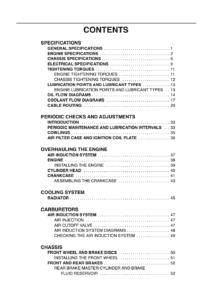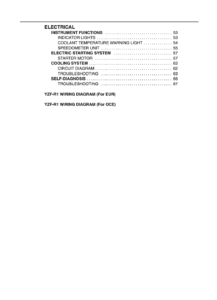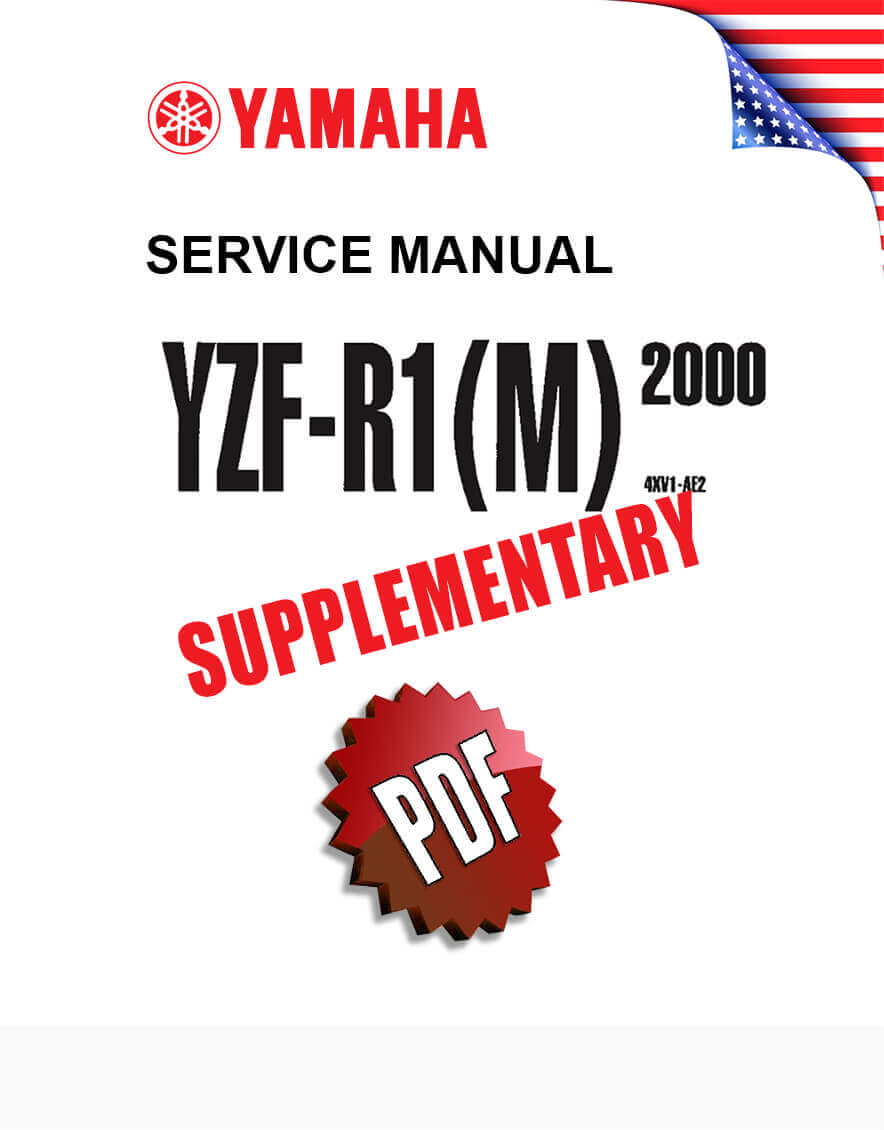Complete PDF version of the Supplementary Service Manual for the Yamaha YZF-R1Y (M). A MUST for every R1 owner.
Important: This Supplementary manual is to be used in conjunction with the standard Service Manual for the YZF-R1 1998 that can also be found on this website.
Models covered by this manual: 2000-2001
Number of pages: 78 pages
Table of contents:


This PDF repair manual can be downloaded right after the payment process in complete, on the device of your choice. You will also receive the download link by email along with your receipt.
We do not offer printed manuals, for the following reasons:
- it is more eco-friendly to use a digital version
- your manual never gets dirty or greasy
- you can always choose to print the specific page(s) you need to work on your bike
- you receive your manual immediately after payment
- it is searchable

Yamaha YZF-R1
Yamaha‘s YZF-R1, or R1, is an open class sport bike, or superbike, motorcycle produced from 1998 to the present.
2000-2001
Yamaha introduced a number of enhancements to the bike in 2000, including minor changes to the bodywork to allow for enhanced long-distance riding handling. Yamaha’s major design goal was to improve upon rather than replace the present bike. The dry weight has been reduced from 414 pounds to 414 pounds (188 kg).
The top-end output stayed unaltered at 127.8 horsepower (95.3 kW) at the rear wheel, but engine management system changes were supposed to result in a smoother, broader power distribution. Despite a few changes that resulted in a 3% reduction in drag coefficient, the bodywork was still unmistakably R1. The headlight housing’s shape has been sharpened, the side panels have been made more aerodynamic and slippery, and the windscreen has been reworked for improved rider protection.
The seating area has also been updated. The gasoline tank was replaced with a more relaxed rear angle and deeper leg recesses to improve rider feel. The seat was repositioned further back in the tank, and the new, steeper seating position increased weight to the front end. All of this was done to enhance weight bias, tighten cornering, and overall stability.
Mechanically, the carburetors were re-jetted to increase throttle responsiveness, particularly in the low end, all the way up to the bike’s redline of 11,750 rpm. The modified camshafts were lighter and used internal oil channels to lubricate journals, which, when paired with lower tappet clearance, resulted in less friction and engine noise. A higher first gear, a hollow chrome moly shift shaft with an extra bearing, and a totally rebuilt shift linkage and foot pedal were all added to the gearbox. These modifications were made to address transmission issues in previous versions and to aid in the smooth passage of power from the bike to the road.
Source: Wikipedia

